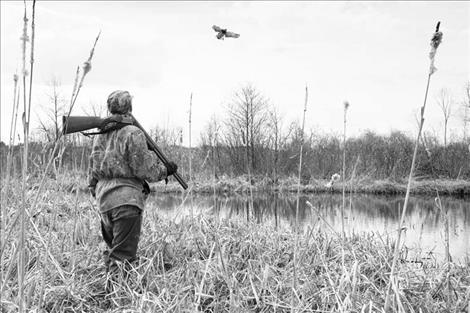Drought conditions worsen across county, state
Hey savvy news reader! Thanks for choosing local.
You are now reading
1 of 3 free articles.
All of Lake County moved into moderate drought conditions last week, according to the U.S. Drought Monitor, significantly different from the week before, when the easternmost portion of the county was listed as only “abnormally dry.”
At this time last year, nearly all of Montana was in the “normal” range for moisture. Now, there isn’t a corner of the state that has seen average amounts of precipitation, and only four counties near Great Falls are classified as not being in some stage of moderate to extreme drought.
While the western half of the state has been more moist than the eastern half, where extreme drought conditions have taken hold in many places, the dry spell is beginning to take its toll locally.
Ronan beekeeper Chuck Lewis said that while he’s lucky enough to have multiple water sources for his 10 hives, not everyone is so lucky. Last week a person in the Flathead Valley Beekeeping group noted that a local had complained about honey bees inundating a residential water fountain that offered a cool drink on an increasingly dry landscape.
“The drought can definitely play havoc with honey bees,” Lewis said.
It’s not just insects that are feeling the impacts of the drought. In Lake County’s pristine wetlands, the fight for survival gets harder when it dries out.
John Grant is the manager for the Ninepipe Wildlife Management area located near Ronan. Grant says there are 1,000 distinct wetland basins on the 4,200-acre WMA, and drought has significant impact on the wildlife that live there.
“Species that do not have the capacity to easily move to other areas probably could be directly impacted,” Grant said. “Management for waterfowl has been a primary focus since its establishment, and although full-grown ducks can fly to other areas, the drought has disrupted their breeding habitat needs, so there will be fewer ducks produced locally.”
Ducks that do stick around will find fewer aquatic invertebrates to feast on, meaning fewer calories available to meet energetic needs to hatch eggs.
“Survival of those that do hatch will be diminished because there is less brood habitat, which shrinks as wetlands dry, and the distance they need to walk over land to alternate wetlands increases making them very vulnerable to predators and stress,” Grant said.
Spring’s rainfall will help some. “The timely, generous rainfall that we got in late spring invigorated the vegetation in fields where nesting occurs and saved our fall-seeded and spring-seeded grain crops that will feed many birds in fall and winter,” Grant said.
Hunters who flock to the management area every fall from all over the United States should expect a leaner year.
“Expectations for the hunting season should be lower than normal especially for ducks which have had poor quality throughout much of their breeding range in North America,” Grant said. “Pheasants are not impacted by drought as much as ducks but are most productive when water is more available on the ground.”
While no one has a crystal ball to say exactly how long the drought will last, scientists and economists do have data analyzing the last drought the state endured that show just how devastating dry spells can be. In 2017, Montana experienced a drought that produced a record number of wildfires, and 1.4 million acres burned. That was the most acres burned in a single season since 1910. Fire suppression costs that year topped $400 million. University of Montana researchers found that the combination of firefighting costs and lost revenue caused a $200 million shortfall in the state’s budget.
Other industries were also hard-hit. University of Montana researchers noted that an estimated 800,000 visitors did not travel to the state during 2017, accounting for $240 million in lost revenue.
Those are devastating impacts, but it’s important to note that a December 2020 paper co-authored by 16 scientists for the American Meteorological Society noted that as far as droughts go, the 2017 drought wasn’t terribly significant in terms of droughts on record.
“Though quick to materialize and briefly intense, the 2017 drought did not exceed many noteworthy droughts in terms of longevity and spatial extent over Montana, North Dakota and South Dakota,” the scientists found.
The paper notes that most droughts since the turn of the century have been brief. The last significant multi-year prolonged drought took place in the 1980s.
The National Oceanic and Atmospheric Administration expects current dry conditions to persist or worsen through Oct. 31.
State and local government are starting to take action to mitigate impacts. Gov. Greg Gianforte mobilized the National Guard last week to help fight wildfires. He also issued a disaster declaration that will help make available federal funding for drought relief.
“Every region of the state faces severe to extreme drought conditions, and the situation is getting worse,” Gianforte said in a press release. “These alarming drought conditions are devastating our ag producers, challenging our tourism industry and could bring a severe wildfire season. This emergency order makes available all necessary state government resources to mitigate the impacts of this drought and protect Montanans.”
Grant says there’s little folks can do about the drought, but there is a way to help the critters living through it. “Getting people to slow down on the gravel roads around Ninepipe would cut down on the number of animal-roadkills and reducing the dust created, which would help with improving air quality that is as stressful and unhealthy for wildlife as it is for people,” he said.
















